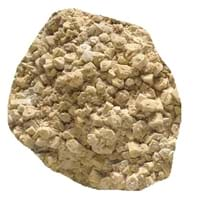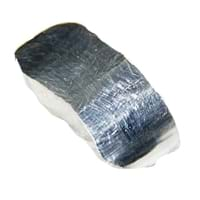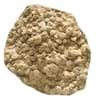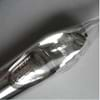Strontium vs Indium
Periodic Table
Symbol
Sr
In
Group Number
2
16
13
5
Period Number
5
5
Block
s block
p block
Element Family
Alkaline Earth
Post-Transition
CAS Number
7440246
99+
7440746
17
Space Group Name
Fm_ 3m
I4/mmm
Space Group Number
225.00
2
139.00
8
Facts
Interesting Facts
- Strontium element is softer than Calcium.
- Silvery Strontium turns yellow, if exposed to air.
- Luster of Indium is bright in nature.
- Reich and richer were looking for thallium in zinc metal and they discovered Indium metal.
Sources
Found in Minerals, Mining, Ores of Minerals
Mining, Ores of metals
History
Who Discovered
William Cruickshank
Ferdinand Reich and Hieronymous Theodor Richter
Discovery
In 1787
In 1863
Abundance
Abundance In Universe
4 * 10-6 %
14
3 * 10-8 %
28
Abundance In Sun
~0.000005 %
15
~0.0000004 %
23
Abundance In Meteorites
0.00 %
15
0.00 %
99+
Abundance In Earth's Crust
0.04 %
10
0.00 %
99+
Abundance In Oceans
0.00 %
4
0.00 %
99+
Abundance In Humans
0.00 %
7
Not Available
Uses
Uses & Benefits
- Strontium metal is used to producing ferrite magnets as well as refining zinc.
- By-product of nuclear reactors called Strontium-90 is a radioactive isotope; it is absorbed by tissues and destroys bone marrow and cancer growth.
- It is used to produce indium tin oxide (ITO), it is used in manufacturing touch screens, flat screen TVs and solar panels.
- Its nitride, phosphide and antimonide are used in transistors and microchips.
Industrial Uses
Ammunition Industry, Chemical Industry
Aerospace Industry, Automobile Industry
Medical Uses
NA
Medical Research
Other Uses
Alloys
Alloys, In Nuclear Reactors
Biological Properties
Toxicity
Non Toxic
Non Toxic
Present in Human Body
Yes
Yes
In Blood
0.03 Blood/mg dm-3
19
Not Available
In Bone
140.00 p.p.m.
7
Not Available
Physical Properties
Melting Point
769.00 °C
99+
156.61 °C
99+
Boiling Point
1,384.00 °C
99+
2,000.00 °C
99+
Appearance
Physical State
Solid
Solid
Color
Silvery White
Silvery Gray
Luster
Metallic
Lustrous
Hardness
Mohs Hardness
1.50
18
1.20
20
Brinell Hardness
Not Available
8.80 MPa
99+
Speed of Sound
Not Available
1,215.00 m/s
99+
Optical Properties
Allotropes
No
No
α Allotropes
Not Available
Not Available
β Allotropes
Not Available
Not Available
γ Allotropes
Not Available
Not Available
Chemical Properties
Chemical Formula
Sr
In
Isotopes
Known Isotopes
27
12
35
4
Electronegativity
Pauling Electronegativity
0.95
99+
1.78
16
Sanderson Electronegativity
0.72
27
2.14
8
Allred Rochow Electronegativity
0.99
37
1.49
13
Mulliken-Jaffe Electronegativity
1.00
18
1.76
10
Allen Electronegativity
0.96
40
1.66
18
Electropositivity
Pauling Electropositivity
3.05
7
2.22
38
Ionization Energies
1st Energy Level
549.50 kJ/mol
99+
558.30 kJ/mol
99+
2nd Energy Level
1,064.20 kJ/mol
99+
1,820.70 kJ/mol
18
3rd Energy Level
4,138.00 kJ/mol
10
2,704.00 kJ/mol
39
4th Energy Level
5,500.00 kJ/mol
13
5,210.00 kJ/mol
17
5th Energy Level
6,910.00 kJ/mol
18
Not Available
6th Energy Level
8,760.00 kJ/mol
18
Not Available
7th Energy level
10,230.00 kJ/mol
19
Not Available
8th Energy Level
11,800.00 kJ/mol
19
Not Available
9th Energy Level
15,600.00 kJ/mol
17
Not Available
10th Energy Level
17,100.00 kJ/mol
19
Not Available
11th Energy Level
31,270.00 kJ/mol
6
Not Available
Electrochemical Equivalent
1.64 g/amp-hr
99+
1.43 g/amp-hr
99+
Electron Work Function
2.59 eV
99+
4.12 eV
24
Other Chemical Properties
Ionization, Radioactive Isotopes, Radioactivity, Solubility
Ionization, Radioactive Isotopes, Radioactivity, Solubility
Atomic Properties
Atomic Number
38
99+
49
99+
Electron Configuration
[Kr] 5s2
[Kr] 4d10 5s2 5p1
Crystal Structure
Face Centered Cubic (FCC)
Tetragonal (TETR)
Crystal Lattice
FCC-Crystal-Structure-of-Strontium.jpg#100
TETR-Crystal-Structure-of-Indium.jpg#100
Atom
Number of Protons
38
99+
49
99+
Number of Neutrons
50
99+
66
99+
Number of Electrons
38
99+
49
99+
Radius of an Atom
Atomic Radius
215.00 pm
5
167.00 pm
24
Covalent Radius
195.00 pm
15
142.00 pm
99+
Van der Waals Radius
249.00 pm
7
193.00 pm
31
Atomic Weight
87.62 amu
99+
114.82 amu
99+
Atomic Volume
33.70 cm3/mol
6
15.70 cm3/mol
33
Adjacent Atomic Numbers
Valence Electron Potential
25.70 (-eV)
99+
54.00 (-eV)
25
Lattice Constant
608.49 pm
6
325.23 pm
99+
Lattice Angles
π/2, π/2, π/2
π/2, π/2, π/2
Lattice C/A Ratio
Not Available
Not Available
Mechanical Properties
Density
Density At Room Temperature
2.64 g/cm3
99+
7.31 g/cm3
99+
Density When Liquid (at m.p.)
2.38 g/cm3
99+
7.02 g/cm3
33
Tensile Strength
Not Available
2.50 MPa
21
Viscosity
Not Available
Not Available
Vapor Pressure
Vapor Pressure at 1000 K
121.00 (Pa)
1
0.01 (Pa)
11
Elasticity properties
Shear Modulus
6.03 GPa
99+
Not Available
Young's Modulus
15.70 GPa
99+
11.00 GPa
99+
Poisson Ratio
0.28
17
Not Available
Other Mechanical Properties
NA
Ductile, Malleable
Magnetic Properties
Magnetic Characteristics
Specific Gravity
2.64
99+
7.31
99+
Magnetic Ordering
Paramagnetic
Diamagnetic
Electrical Properties
Electrical Property
NA
Conductor
Resistivity
132.00 nΩ·m
24
83.70 nΩ·m
34
Electrical Conductivity
0.08 106/cm Ω
26
0.12 106/cm Ω
17
Electron Affinity
5.03 kJ/mol
38
28.90 kJ/mol
31
Thermal Properties
Specific Heat
0.30 J/(kg K)
18
0.23 J/(kg K)
27
Molar Heat Capacity
26.40 J/mol·K
28
26.74 J/mol·K
25
Thermal Conductivity
35.40 W/m·K
37
81.80 W/m·K
21
Critical Temperature
Not Available
Not Available
Thermal Expansion
22.50 µm/(m·K)
18
32.10 µm/(m·K)
9
Enthalpy
Enthalpy of Vaporization
150.00 kJ/mol
99+
226.40 kJ/mol
40
Enthalpy of Fusion
9.16 kJ/mol
38
3.28 kJ/mol
99+
Enthalpy of Atomization
163.20 kJ/mol
99+
242.70 kJ/mol
99+
Standard Molar Entropy
55.00 J/mol.K
26
57.80 J/mol.K
22
|
||
|
||
|












